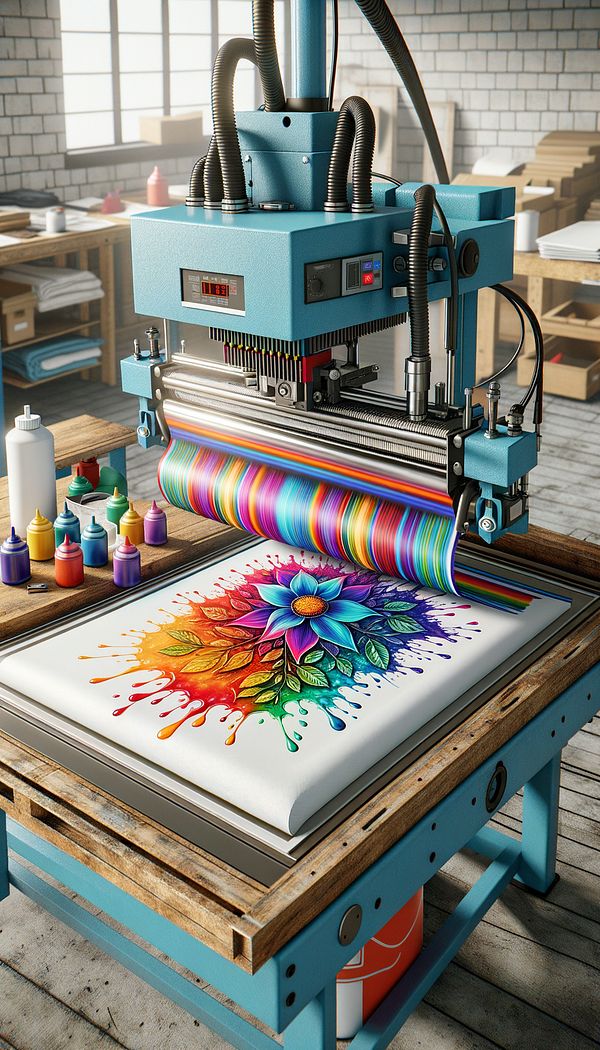What is Heat Transfer Printing?
Heat transfer printing is a printing method where designs are transferred to materials using heat and pressure.
Description
Heat transfer printing is a versatile and widely used printing technique in the world of interior design, particularly in the realm of textiles and upholstery and decorative objects. This method involves transferring a design onto a material, such as fabric, metal, or even wood, by applying heat and pressure. Essentially, a heat-sensitive ink or adhesive is used to print a design onto a special transfer paper. The paper is then placed onto the material and subjected to high temperatures, usually through a heat press, which causes the ink to transfer and adhere to the substrate's surface. This technique offers a high degree of durability and can produce vivid, detailed designs that are difficult to achieve through traditional printing methods. Heat transfer printing is ideal for creating custom or limited edition items, as it allows for a wide range of colors and complex patterns without the need for expensive setup fees or large minimum orders. Whether used for creating bespoke furniture upholstery, custom wallpapers, or decorative panels, heat transfer printing enriches the interior design landscape with its ability to bring intricate and personalized designs to life.
Usage
Heat transfer printing is commonly used to produce personalized and custom designs on a range of interior design elements. For example, designers can create bespoke fabric patterns for furniture upholstery, custom graphic wall panels, and unique wallpapers. This method is also popular for branding or personalizing home accessories, like cushions, curtains, and even flooring mats, allowing for a high degree of customization in interior spaces.
FAQs
-
How is heat transfer printing different from screen printing?
Heat transfer printing differs from screen printing primarily in its use of heat and pressure to transfer designs onto materials. While screen printing involves pushing ink through a mesh stencil directly onto the material, heat transfer printing uses a pre-printed design on transfer paper, which is then transferred to the material's surface under heat and pressure. This allows for more detailed and colorful designs with heat transfer printing, especially on materials that are difficult to print on directly.
-
Can heat transfer printing be used on any material?
Heat transfer printing can be applied to a wide range of materials, including fabrics, metals, plastics, and woods. However, the success and quality of the print depend on the material's heat resistance and surface properties. Some materials may require specific types of transfer papers or inks to achieve optimal results.
-
Is heat transfer printing durable?
Yes, heat transfer printing can produce highly durable designs, especially when high-quality transfer papers and inks are used. The heat and pressure during the transfer process ensure that the design adheres well to the material's surface, making it resistant to fading, cracking, and peeling under normal conditions.
Practical Application
When applying heat transfer printing in your interior design projects, consider the material's compatibility and the desired durability of the final product. It's important to choose high-quality transfer papers and inks tailored to the specific material you're working with to ensure a lasting design. Experimenting with different heat settings and pressure levels can also help achieve the best results. Additionally, collaborating with a reputable print provider who has experience in heat transfer printing can further enhance the quality and outcome of your custom designs.
-
Decorative Techniques322 articles
-
Decorative Objects240 articles
-
Fabrication & Craftsmanship133 articles
-
Color & Patterns154 articles
-
Textiles & Upholstery252 articles
-
CapitalIn interior design, capital refers to the topmost portion of a column.
-
Drop-In Spring UnitA drop-in spring unit is a pre-assembled spring system used in upholstered furniture for support and comfort.
-
Curved-Back SofaA curved-back sofa is a type of sofa with a rounded, continuous backrest.
-
Pegged FurniturePegged furniture is furniture that has been assembled using pegs to join its parts.
-
SouthwesternSouthwestern refers to a design style influenced by the characteristics and cultures of the American Southwest.
